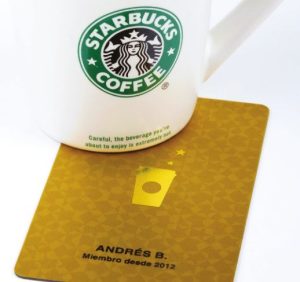
by Jennifer Kohlhepp | CM Magazine Featured
Metal Premium Credit Cards Continue to Gain Market Share Around the World
 By Jon Wilk, CompoSecure, CEO and President
By Jon Wilk, CompoSecure, CEO and President
Today’s consumers want to differentiate themselves and be elevated to an “elite” status, wanting to create associations with their premium products. This premiumization has grown over the past decade as consumers are increasingly drawn to brands that exemplify quality or rarity. This can be seen across a variety of products including everyday items such as coffee and spirits—think Starbucks, craft beer and small batch whiskeys. Items deemed artisanal, bespoke or gourmet are in demand.
Consumers select premium items as a means to validate status and as a tangible communication of that status to others. A widely-recognized example is the evolution of premium coffees, in terms of both brands as well as the coffee experience. Starbucks capitalized on this trend with tremendous success. The National Coffee Association reports that approximately 59% of coffee consumed in the United States is classified as gourmet with younger consumers, under 35, driving the growth in coffee shop consumption. According to a Nielsen report, high-end spirits now account for 62% of sales in the United States, while more sophisticated tequila is outselling standard tequila in Mexico, according to the Tequila Regulatory Council. Consumers now seek out the next level of elite product, since premium brands have become the norm, propelling a movement to super-premium brands.
A continued upswing in demand for premium products is expected as more than 3 billion people—more than 40% of the world’s population—are anticipated to enjoy a growing level of disposable income. This explosive growth in consumer spending power will reshape the economy and drive social transformation with the middle class and rising affluent consumer accounting for more than one-third of the global economy. According to The World Bank, global growth is expected to increase to 2.8% by 2021, assuming financing conditions continue to be strong.
Rapid Expansion of Metal Cards
This premiumization trend has now moved into credit cards as a way to differentiate credit card offers for consumers. Financial institutions began offering metal and metal hybrid credit cards after taking note of the marketplace for prestige products and the potential for expanding its affluent market. These issuers provide a stylish metal card to their select, top-tier clients. Metal cards have gained notoriety with demand sometimes outpacing supplies, according to Bloomberg. Many issuers have launched metal card programs, starting in the United States and now showing strong growth potential internationally.
Metal cards instill the attributes generally associated with premium products such as high quality, superior design and style, all from a trusted brand. Today, metal credit cards are still in the early stages of adoption. According to a recent Edgar Dunn & Co. survey that was commissioned by CompoSecure, 66% of consumers globally were unaware of metal credit cards, an information void that presents an extraordinary opportunity. The United States was one of the top markets that is familiar with metal cards with only 56% unaware of metal cards. However, many untapped regions have tremendous growth potential due to lack of awareness: Poland (82%), Germany (81%), Australia (81%), Canada (79%), Italy (75%), Brazil (73%), Mexico (72%), France (71%), Turkey (70%) and UK (68%). Card issuers can use metal cards as part of their strong rewards and benefits package to differentiate their brand and capture the market segments clamoring for a premium or prestige product. This is particularly true for businesses seeking to attract and retain millennial customers.
Metal Cards Capture Status-Conscious Consumers
Representing an essential demographic, 24% of millennials in the United States view their credit cards as a status symbol, according to a survey from LendEDU. This is a salient point for card issuers because design and style are of ever-increasing importance to enhance the perceived status. As a Harris study found, millennials have a propensity for social experiences and spend more freely than other generations; this reinforces the interest in the attention garnered from a status card in social situations.
According to the National Bureau of Economic Research (NBER), status credit cards are more likely to be selected if benefits are identical. This is one of the findings from an experimental program coordinated with a large issuer that offered a platinum credit card to high-income clients and a similar card regarding benefits without the platinum status. Additionally, customers were more likely to upgrade to a premium card when informed that the eligibility for their current card was being expanded. Further, the NBER analysis of transactions indicated that consumers in general, not just millennials, were more likely to use a status card for expenditures in a social environment such as in restaurants and bars.
Marketplace for Metal
Evident in the Edgar, Dunn & Co. survey is the current unmet demand for a metal payment card product. When given a choice between metal and plastic, 65% would select the metal card presuming equal benefits and rewards. This demand is high across all markets. There is an especially strong demand for metal cards across emerging and developing economies where the growing middle class is pursuing the premiumization of products and experiences such as in China (91%), Mexico (88%), Turkey (86%), India (85%) and Brazil (82%). In the United States, 56% would switch to metal, and when viewed by income, the rate increased to 80% among those with an annual income of $200,000 or more. This was mirrored internationally with three of four (75%) affluent people exhibiting a higher level of willingness to switch cards and selecting a metal card with equal benefits and rewards.
It is vital for any business to have a product that captures millennials’ attention because it is one of the largest segments of the population. An Oracle study predicts that millennials have a spending power of more than $3.3 trillion. The metal card is a premium, eye-catching item and sparks comment, which aligns well with marketing to millennials who respond to word-of-mouth. Comments from a friend or colleague are more likely to motivate this group than a traditional ad, according to a recent report from GlobalWebIndex. Once you’ve captured this key audience, they are loyal. Millennials are likely to use social media to spread the word about a product or service that has their seal of approval.
Metal’s Tactile Advantage
Many businesses have been built on the concept of latent consumer demand. A well-known example is Netflix—a company that created a business to provide something to consumers that they hadn’t yet identified as a need. Similarly, metal cards can attract consumers. Once the customer becomes aware of the product and has experienced that uniqueness, they are unlikely to want to go back to plastic. Data clearly shows that the metal card is seen as a premier product—one that is of a higher quality and more durable. Currently, there is a first-mover advantage to metal cards at this point, given the overall lack of awareness and inherent “cool” factor in the product.
Conclusion
The appeal of metal cards to an institution’s top targets of affluent, mass-affluent and millennials is profound, especially in regions where there is unmet demand. Stepping up and investing in a metal card program will likely reward the financial institution with new customers, enhance the brand marketing and elevate the institution’s perception as being on the leading edge of innovation and customer care.
About the Author: Jon Wilk is the CEO and president of CompoSecure, where he leads all aspects of the business including sales and business development, manufacturing, R&D and marketing activities of the company. He brings more than 20 years of experience in banking, management consulting and private equity portfolio companies, which helps drive the future growth of CompoSecure. Prior to CompoSecure, he was president of PayChoice (acquired by Sage Software), a leading provider of SaaS-based payroll, human resources and tax-filing solutions. He also held several senior leadership positions at JPMorgan Chase, Bank of America and Merrill Lynch.
